Riksdagshuset, Sweden’s massive parliament building, occupies almost half of Helgeandsholmen, a small island tucked between Stockholm’s city center and the old town.
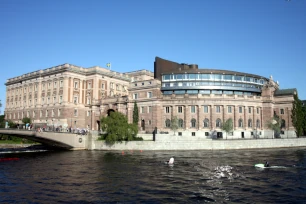
Helgeandsholmen is named after Helgeandshuset (the House of the Holy Spirit), a hospice that was located here from the late thirteenth until the early sixteenth century.
Construction
In 1865 Sweden established a bicameral parliament. It was initially housed in the Gamla Riksdagshuset at Birger Jarls Torg in Riddarholmen. This building was soon considered too small and plans were drafted for a new building at the island of Helgeandsholmen. The Riksbank (National Bank) was also looking for larger premises, and it was decided to build a large complex that could house both institutions.
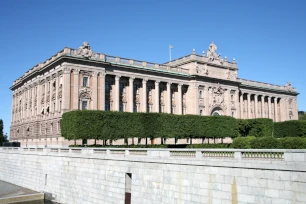
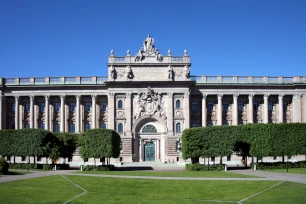
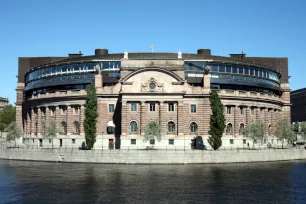
In 1889 a competition was held to select a design for the new building. One of the requirements was that it should not overshadow the Royal Palace nearby. The winner of the competition was Vafrid Karlson, who designed a monumental, domed neoclassical building. However, he was pushed aside by Helgo Zettervall, professor of the Royal Swedish Academy of Arts, who decided to work with the young architect Aron Johansson. Their proposals however were met with heavy criticism. Zettervall resigned and Johansson took ownership of the project.
Construction of the new complex finally started in 1897. The parliament building was completed first, in 1905, and the national bank building was completed the following year.
Move to Sergels Torg
In 1971 Sweden reformed the parliament and moved to a unicameral system. As a result, the parliament required a larger assembly hall and the existing Riksdag building became unsuitable. It moved to the new kulturhuset (house of culture) at Sergels Torg, a square in the center of the city.
Back to Helgeandsholmen
But even as the parliament moved out, the idea was to return to its old location on Helgeandsholmen and expand the parliament building with the national bank building, which had room for a large assembly hall.
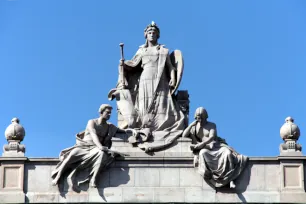
An architectural competition was launched and AOS Architects was selected to remodel the complex at Helgeandsholmen to make it suitable as the seat of the reformed parliament. In 1976 the Riksbank moved to its current modern premise in Brunkebergstorg, clearing the way for the renovation which lasted six years. The most significant change was the expansion of the old national bank building with a modern glass gallery. On October 4, 1983, the parliament moved back to its current location at Helgeandsholmen.
The Parliament Building
The old parliament building has an impressive front facade. A monumental Neo-Baroque frontispiece is flanked by two neoclassical wings with Corinthian columns. An enormous relief of the Swedish coat of arms looms over the central bronze doorway. The statue on top of the balustrade depicts Mother Svea, an allegorical representation of Sweden.
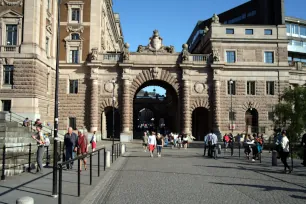
Inside, a grand staircase leads to the two old assembly halls, the first chamber and second chamber. Large glass domes cover the octagonal halls. The interior is decorated with wall paintings by Otte Sköld, Axel Törneman and Georg Pauli.
Two large arches connect the old parliament building with the new parliament building, which are divided by a pedestrianized street. The new parliament building (the old national bank building) has a signature semicircular shape. Inside is the Plenisalen, the plenary hall. Visitors are welcome to follow public sessions of the parliament in the plenary hall from the modern glass gallery above the hall. There are also guided tours of the parliament buildings for those interested.

